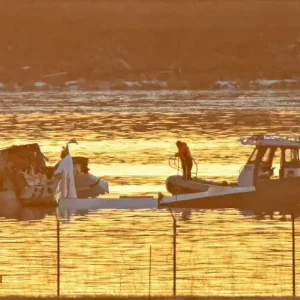In November 1985, a catastrophic event unfolded that would forever be etched into the collective memory of humanity. The eruption of the Nevado del Ruiz volcano in Colombia triggered a massive mudflow that engulfed the town of Armero, leaving a trail of destruction and loss in its wake.
More than 25,000 people perished in what remains one of the deadliest natural disasters in history. Amid this devastation, one image emerged as a stark symbol of human suffering—a young girl named Omayra Sánchez, trapped in the volcanic mudflow. Her delicate yet resilient face, marked by a haunting mix of courage and despair, captured the world’s attention.
Photojournalist Frank Fournier immortalized her plight in a photograph taken just hours before her death. The image, which went on to win the 1986 World Press Photo of the Year, remains an enduring testament to human vulnerability. Yet, it raises a troubling question: why couldn’t anyone, including the photographer, save her?
Warning: This article contains content that some readers may find distressing.
Unraveling the Armero Tragedy
To fully grasp the story behind Omayra Sánchez’s photograph, we must revisit the events surrounding the Armero tragedy.
On November 13, 1985, the Nevado del Ruiz stratovolcano erupted after nearly seven decades of dormancy, catching the nearby communities by surprise. Historically, the volcano had erupted twice before, in 1595 and 1845, each time sending deadly avalanches down the Lagunilla River—the very region where the town of Armero would later rise.

Months before the catastrophic eruption of Nevado del Ruiz in 1985, scientists and experts observed signs of increased volcanic activity and raised urgent warnings about the potential danger. Researchers, climbers, and local officials repeatedly sounded the alarm, but these alerts were largely dismissed by authorities. Despite evident warning signs—such as dead fish found in nearby waters, elevated sulfur levels, and small explosions that ignited a forest fire—no evacuation measures were implemented.
A Town Wiped Out
When the volcano erupted, it triggered pyroclastic flows that rapidly melted the glaciers atop Nevado del Ruiz. The resulting deluge formed four colossal lahars—fast-moving rivers of mud, debris, and water—that thundered down the mountainside at speeds of up to 50 km/h (30 mph). These destructive forces gained momentum as they tore through the terrain, ultimately obliterating the town of Armero.
Nearly 94% of Armero’s population was lost as the lahars engulfed the area. Colombian reports estimate the death toll at approximately 23,000 people. The eruption produced towering clouds of smoke and ash that rose 15 kilometers into the sky, altering the region’s climate and leaving widespread devastation. In total, 5,092 homes were destroyed—4,718 of them in Armero alone—displacing around 230,000 people. Financial losses were staggering, ranging between 35 and 50 billion Colombian pesos, equivalent to $7.5 to $10.5 million USD at the time.
The Story of Omayra Sánchez
Among the thousands of victims, 13-year-old Omayra Sánchez became a poignant symbol of the tragedy. Her heartbreaking plight captured the world’s attention.
Born on August 28, 1972, in Armero, Omayra grew up with her parents—Álvaro Enrique, a rice and sorghum collector, and María Aleida, a nurse. She lived alongside her brother, Álvaro Enrique, and her aunt, María Adela Garzón. Her tragic final hours amidst the disaster would forever etch her name into the world’s memory as a symbol of human resilience and vulnerability.

On the night of the Armero disaster, Omayra Sánchez and her family were awake, deeply unsettled by the ashfall from the erupting Nevado del Ruiz volcano. As they anxiously monitored the situation, the terrifying roar of an approaching lahar shattered the silence. Moments later, a torrent of mud, debris, and water buried the Andean valley, consuming the town of Armero. Omayra was trapped beneath the wreckage of her home, pinned by concrete and rubble that made any chance of escape impossible.
A Symbol of Courage in the Face of Tragedy
When rescue teams arrived, they found Omayra’s legs wedged under the ruins, with her aunt’s lifeless arms still wrapped around her. Despite relentless efforts, freeing her proved impossible; any movement risked worsening her injuries. As water levels rose, rescuers placed a tire around her to help her stay afloat, but her condition grew increasingly dire.
Doctors determined that amputating her legs was the only way to save her. Tragically, the necessary surgical equipment wasn’t available on-site. For over 60 agonizing hours, Omayra remained trapped, partially submerged in water. Throughout her ordeal, she displayed remarkable resilience, calmly speaking with rescuers and even engaging with a journalist. She asked for sweet treats, sang songs, and expressed concern over a math exam she believed she had missed.
As time passed, her body began to succumb to the elements. Hallucinations set in, her hands swelled, and her face reddened as the cold water enveloped her. Yet, through it all, Omayra remained composed and brave.
“I don’t feel my body anymore,” she said at one point, her voice steady despite the enormity of her suffering.
A Photograph That Shook the World
Omayra’s fate might have been different if authorities had acted on the warnings of an impending eruption. But as the hours ticked by, it became clear there was no way to save her. Without the equipment to perform an amputation, doctors made the heartbreaking decision to allow her to pass peacefully rather than prolong her pain.
In her final hours, French photojournalist Frank Fournier arrived in Armero. Having flown into Bogotá shortly after the eruption, Fournier made his way to the devastated town, overwhelmed by the eerie silence and sheer scale of destruction. It was during this moment, as Omayra’s strength began to fade, that Fournier captured the iconic photograph—a haunting image that would come to symbolize both the tragedy of Armero and the courage of a young girl whose life was cut far too short.

“Everywhere, people were trapped. Rescuers struggled to reach them, and the air was filled with screams—until, one by one, those cries faded into an eerie silence,” French photojournalist Frank Fournier recalled to the BBC, nearly 20 years after the Armero disaster. “It was haunting beyond words.”
A local farmer led Fournier to Omayra Sánchez, whose body was already showing signs of swelling from her prolonged entrapment. Struck by her quiet bravery amid unimaginable agony, Fournier captured the moment in a photograph. This single image would go on to symbolize the despair of the tragedy and the systemic failures that left so many to perish.
Reflecting on the encounter, Fournier said, “She was facing death with such courage and dignity.”
Omayra Sánchez’s Final Moments
On the morning of November 16, 1985, at 9:45 a.m., Omayra Sánchez took her final breath. Just hours earlier, a rescuer had tried to comfort her, saying, “Relax, sweetheart. We’re going to get you out soon. You’re going to live a long life.” By then, water had risen to her neck, and coffee beans floated in her hair, a poignant reminder of the debris that surrounded her.
In her last moments, witnesses recorded her final words: “Mommy, I love you so much. Daddy, I love you. Brother, I love you.” Omayra’s brother survived the disaster, but her father and aunt were among the thousands who perished. Her mother, María Aleida, was in Bogotá on a business trip when the eruption struck, sparing her life but leaving her to grapple with unimaginable loss.
“It’s horrifying,” María Aleida said later, speaking of the tragedy, “but we must focus on the living.” She referred to survivors like herself and her 12-year-old son, who lost a finger in the disaster.
A Controversial Photograph
Fournier’s image, titled The Agony of Omayra Sánchez, quickly became a symbol of the Armero tragedy, igniting global outrage and sorrow. The photograph captured the intimate final hours of a young girl’s life and brought international attention to the devastating aftermath of the eruption.
While the image succeeded in raising awareness and funds for the victims, it also sparked fierce debate. Critics accused Fournier of exploiting Omayra’s suffering, branding him insensitive for photographing such a deeply personal moment. The controversy reached its peak when some labeled him a “monster” for not intervening to save her.
Fournier defended his decision, explaining that he was powerless to change the outcome but could amplify the voices of the victims. “That photograph,” he said, “helped expose the irresponsibility of the country’s leaders and brought much-needed aid to those who survived.” For Fournier, the haunting image was not just a snapshot of tragedy—it was a call to action against systemic neglect and indifference.

Despite the controversy surrounding the image, Frank Fournier’s photograph won the prestigious World Press Photo of the Year award in 1986. The haunting image captured global attention, bringing the horrors of the Armero disaster to the forefront of public consciousness.
As the photograph circulated worldwide, some questioned why Fournier hadn’t attempted to rescue Omayra Sánchez. He explained to the BBC that saving her was simply not possible under the circumstances. “There was a massive outcry—debates on television about whether photojournalists are vultures,” Fournier recalled.
“But I believed her story needed to be told. In some ways, I felt relieved by the reaction—it would have been far worse if no one had cared.”
A Legacy of Remembrance
The photograph of Omayra Sánchez’s final moments has left an indelible mark. Manuel Martín Benitos, a family friend, turned her tragic death into a symbol of hope and resilience. In 1986, he founded the International Foundation Omayra Sánchez, an organization dedicated to disaster prevention and victim support around the world.
Over the years, Omayra’s story has been remembered in countless ways. Publications like El Tiempo have kept her memory alive, while her story has inspired poems, novels, and music. Her courage in the face of tragedy continues to resonate with people globally.
Armero Today
In response to the disaster, the Colombian government established the Oficina Nacional para la Atención de Desastres (National Office for Disaster Preparedness), now called the Dirección de Prevención y Atención de Desastres (Directorate for Disaster Prevention and Preparedness). This agency implemented disaster preparedness plans across Colombia to mitigate future tragedies.
A unique tribute to Omayra’s legacy can be found in nature: a species of cricket discovered in the region where the disaster occurred was named Gigagryllus omayrae in her honor. Her name now lives on in both human history and the natural world.
Today, the site of Armero no longer exists as a town. Instead, it serves as a solemn memorial, marked with Christian crosses and a monument dedicated to Omayra’s memory.
A Voice That Accuses
In a poignant reflection, Germán Santa María Barragán wrote in El Tiempo on November 23, 1985:
“Her face, her words, and her courage—broadcast around the world on television and captured in the headlines of the largest newspapers and magazines in the United States and Europe—remain a powerful testimony. They serve as an indictment against those who could have, at the very least, mitigated the severity of the tragedy.”
Although Nevado del Ruiz remains active, Armero stands as a silent reminder of lives lost and lessons learned, with Omayra Sánchez forever symbolizing the resilience of the human spirit amid unimaginable despair.
Omayra’s name endures as a poignant reminder of the innocence shattered by an unimaginable tragedy. For those who bore witness to her final hours, her story remains an unforgettable and haunting testament to human suffering—one that must never fade from memory.




